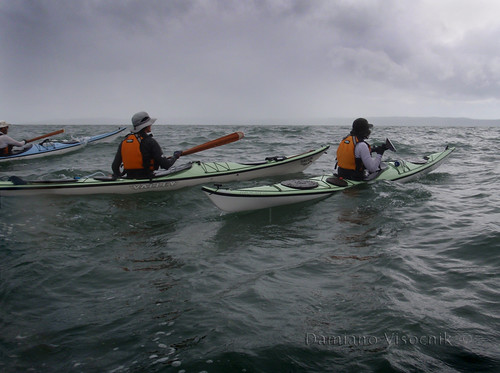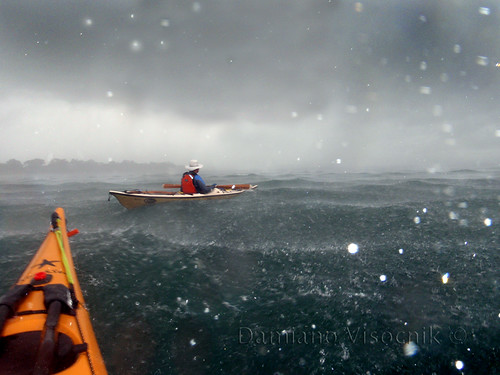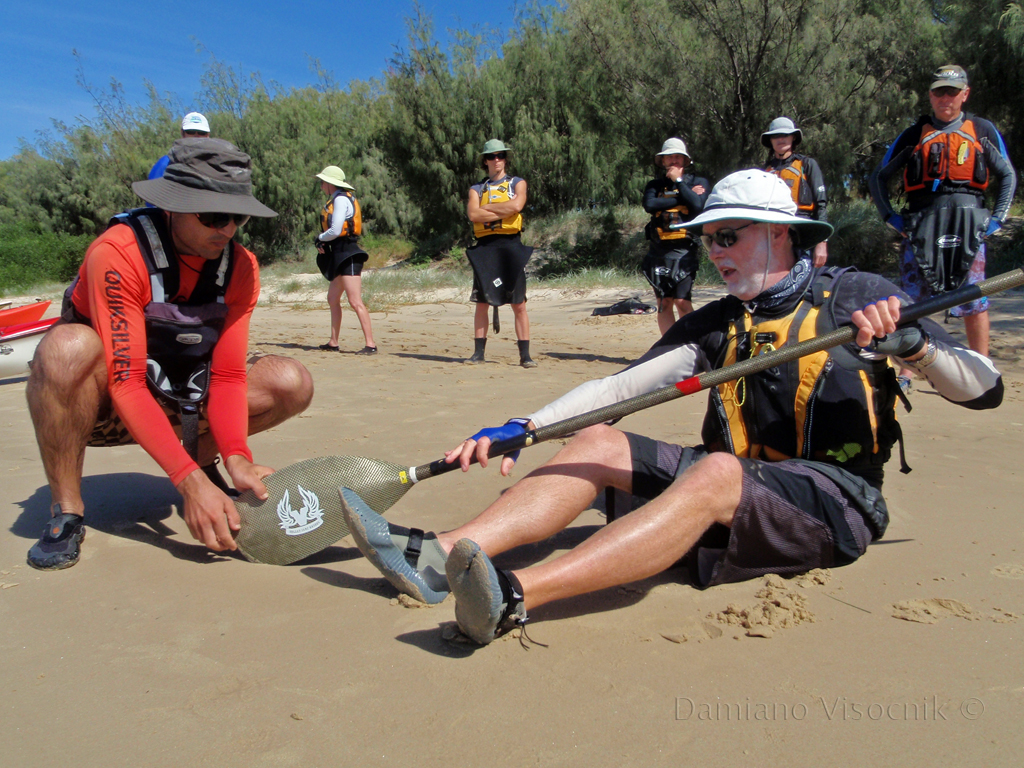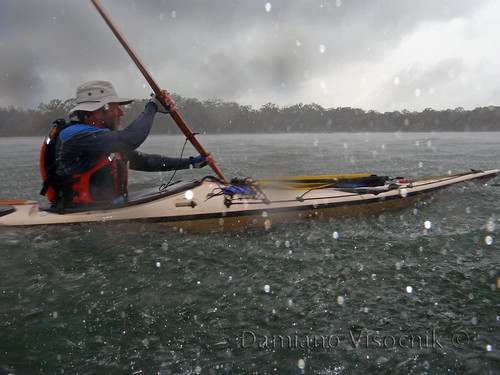I did not want to use the same style as the stay anchor that I have documented here but I was after a recessed fitting.
In the past I owned a Raider sea kayak and the clean deck free of hardware anchors for the perimeter lines really appealed to me.
The Raiders use through holes as deck fittings.
While very clean and very strong those fittings are a bit harder to make than your standard bolt-on stainless steel saddle.
I selected a section of the deck that was free of bulkheads and other under deck fittings.
Using a high speed drill (Dremel) I made two parallel holes large enough to fit snugly a polyethylene tube (Ø approx 8 mm ).
The tube is about the diameter of the cord that I wanted to thread through the hole.
Since the poly tube would deform and flatten on a tight radius I inserted a cord inside the tube that will prevent kinking of the tube.
The tube fitted snugly and it was threaded through the two holes.
The below pictures shows the view inside the kayak.
The tube was pushed hard against the under deck leaving just a small gap.
I mixed and tinted a small batch epoxy and microfibre to the consistency of firm peanut butter.
Working through the small front hatch I pushed the paste into place by forcing it with my fingers into the gap between tube and deck. This is essential since I wanted to created a tight seal around the tube with no voids.
It was all done by feel since I could not see inside the kayak.
The tube would be later removed and any gaps would leave a hole.
Untinted epoxy would have made a white recess; I preferred to color match the deck.
epoxy paste before curing and sanding
After full cure, the epoxy patch was heated up with a light bulb (warm temp) to soften the poly tube.
The tube was then easily removed (epoxy does not stick to poly) and a nice clean recess was left behind where the desired fitting was inserted.
here is the "fixed" version for my boom pulley
and this is the "dynamic" version for the same pulley.
I used bungee cord to create a loop for the boom pulley.
In windy conditions the bungee allows for some give when caught in a gust and possibly preventing a capsize.
The large epoxy patch distributes the load better then just a simple stainless steel saddle or a single plastic deck fitting.
To date I have not seen any of these fittings fail while I have encountered numerous factory fittings brake (plastic ones) or rip out (single bolt on a light deck).

.jpg)
.jpg)
.jpg)
.jpg)
.jpg)
.jpg)
.jpg)

.jpg)



.jpg)



.jpg)
.jpg)
.jpg)

.jpg)
.jpg)


.jpg)

